Introduction
Stir-fried pork tripe, known in Chinese cuisine as 炒肚片 (chǎo dǔ piàn), is a dish that marries texture, flavor, and tradition. Often overlooked in Western kitchens, tripe—the edible lining of a cow’s or pig’s stomach—has been a culinary staple in many cultures for centuries. When prepared correctly, it offers a tender yet chewy consistency that absorbs flavors beautifully, making it a canvas for aromatic spices, savory sauces, and crisp vegetables. This article will demystify the process of creating 炒肚片, offering a detailed, step-by-step recipe, tips for perfection, and insights into its cultural significance. Whether you’re a seasoned home cook or a curious food enthusiast, this guide will equip you with the knowledge to transform this humble ingredient into a restaurant-worthy dish.
The Allure of Stir-Fried Pork Tripe
Tripe’s reputation as a challenging ingredient often stems from its strong, gamey odor and the perception that it requires complex preparation. However, with the right techniques—blanching, marinating, and high-heat stir-frying—it becomes a delightful addition to your table. In Chinese cooking, 炒肚片 is celebrated for its balance of flavors: the umami-rich tripe pairs harmoniously with ginger, garlic, and soy sauce, while vegetables like bell peppers and onions add freshness and crunch. Beyond its taste, the dish carries cultural weight, often appearing at banquets and family gatherings as a symbol of culinary expertise and resourcefulness.
Ingredients: Building Flavor Layer by Layer
To create an authentic 炒肚片, gather the following ingredients. Precision in measurements ensures harmony, but feel free to adjust seasonings to suit your palate.
For the Tripe:
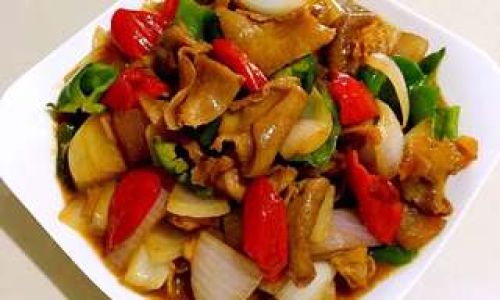
- 500g fresh pork tripe (preferably honeycomb tripe, known for its tender texture)
- 2 tablespoons cornstarch (for cleaning)
- 1 teaspoon salt (for cleaning)
- 1 tablespoon vegetable oil (for blanching)
- 4 cups water (for blanching)
- 3 slices fresh ginger
- 2 garlic cloves, smashed
- 1 star anise pod
- 1 cinnamon stick (optional)
For the Stir-Fry:
- 1 medium bell pepper (red or green), thinly sliced
- 1 medium onion, thinly sliced
- 3 garlic cloves, minced
- 1 tablespoon fresh ginger, grated
- 2 scallions, white and green parts separated, chopped
- 1 tablespoon Shaoxing wine (or dry sherry)
- 2 tablespoons light soy sauce
- 1 tablespoon oyster sauce
- 1 teaspoon dark soy sauce (for color)
- 1/2 teaspoon white pepper
- 1 teaspoon sugar
- 1/4 cup chicken broth (or water)
- 1 tablespoon sesame oil
- 3 tablespoons vegetable oil (for stir-frying)
- 1 teaspoon cornstarch mixed with 1 tablespoon water (slurry for thickening)
Optional Garnishes:
- Chopped cilantro
- Toasted sesame seeds
- Red chili flakes
Preparing the Tripe: The Foundation of Flavor
The key to exceptional 炒肚片 lies in meticulous preparation. Tripe’s natural muskiness can be off-putting if not addressed properly. Follow these steps to clean and tenderize it:
-
Cleaning the Tripe:
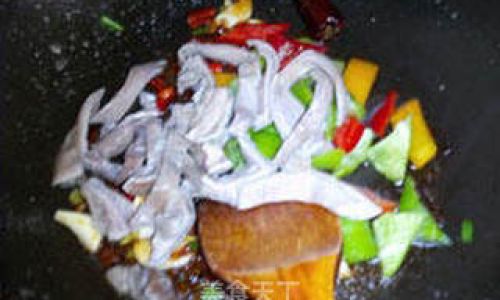
- Rinse the tripe under cold water to remove any surface debris.
- Place it in a large bowl and sprinkle with cornstarch and salt. Rub vigorously for 5 minutes to scrub away impurities.
- Rinse thoroughly under cold water until the water runs clear.
-
Blanching the Tripe:
- In a large pot, combine 4 cups water, ginger slices, smashed garlic, star anise, and cinnamon (if using). Bring to a boil.
- Add the tripe and 1 tablespoon vegetable oil (the oil helps reduce foam). Boil for 2–3 minutes.
- Drain and rinse under cold water. This step not only removes residual odors but also begins the tenderizing process.
-
Slicing the Tripe:
- Pat the tripe dry with paper towels.
- Using a sharp knife, slice it into thin, uniform pieces (about 1/4 inch thick). Thin slices ensure quick, even cooking during stir-frying.
Crafting the Stir-Fry: A Symphony of Heat and Flavor
Stir-frying is a dance of timing and temperature. Mastering this technique will elevate your 炒肚片 from ordinary to extraordinary.
-
Preparing the Aromatics and Vegetables:

- Slice the bell pepper and onion into uniform strips to ensure even cooking.
- Mince garlic and grate ginger finely; these will form the flavor base.
- Separate the scallion whites (used early in cooking) from the greens (used as a garnish).
-
Marinating the Tripe (Optional but Recommended):
In a bowl, toss the sliced tripe with 1 tablespoon soy sauce, 1/2 teaspoon white pepper, and 1 teaspoon cornstarch. Marinate for 15–20 minutes to tenderize further and infuse flavor.
-
Stir-Frying Technique:
- Heat the Wok: Place a wok or large skillet over high heat. Add 3 tablespoons vegetable oil and swirl to coat. The wok should be smoking hot before adding ingredients.
- Cook the Aromatics: Add scallion whites, garlic, and ginger. Stir-fry for 30 seconds until fragrant.
- Sear the Tripe: Add the marinated tripe and spread it in a single layer. Let it sear undisturbed for 1 minute to develop caramelization. Toss and stir-fry for 2–3 minutes until lightly browned.
- Add Vegetables: Toss in bell peppers and onions. Stir-fry for 2 minutes, maintaining high heat to retain crunch.
- Deglaze with Shaoxing Wine: Pour in the wine, scraping the wok’s bottom to release browned bits (these add depth).
- Season and Simmer: Add soy sauces, oyster sauce, sugar, and chicken broth. Stir to combine. Reduce heat to medium and simmer for 2–3 minutes to meld flavors.
- Thicken the Sauce: Stir the cornstarch slurry and pour it into the wok. Cook for 1 minute until the sauce coats the ingredients.
- Finish with Aromatics: Drizzle sesame oil and toss in scallion greens. Remove from heat immediately to prevent overcooking.
Serving Suggestions: Elevating the Dish
炒肚片 shines when paired with complementary textures and flavors:
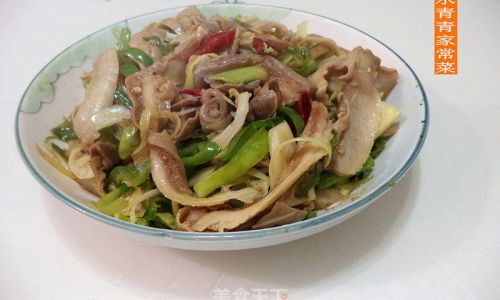
- Steamed Jasmine Rice: The fluffy grains absorb the savory sauce beautifully.
- Stir-Fried Greens: Balance the richness with a side of bok choy or gai lan.
- Pickled Vegetables: A tangy accompaniment cuts through the dish’s richness.
- Noodles: Toss with udon or egg noodles for a heartier meal.
Troubleshooting Common Pitfalls
Even seasoned cooks encounter hiccups. Here’s how to address them:
- Chewy Tripe: Overcooking during blanching or stir-frying toughens the meat. Blanch for exactly 2–3 minutes, and stir-fry briefly over high heat.
- Bitter Aftertaste: Under-rinsing the tripe or overcooking garlic/ginger can cause bitterness. Clean thoroughly and stir-fry aromatics briefly.
- Soggy Vegetables: Overcrowding the wok lowers heat, steaming instead of stir-frying. Cook in batches if necessary.
Variations and Customizations
Adapt 炒肚片 to your taste or dietary needs:
- Spicy Twist: Add dried chili peppers or Sichuan peppercorns during stir-frying.
- Vegetarian Version: Substitute tripe with king oyster mushrooms or tofu for a meatless alternative.
- Fermented Flavors: Incorporate black bean sauce or doubanjiang for a pungent kick.
- Herbaceous Notes: Garnish with fresh basil or mint for a refreshing contrast.
The Cultural Tapestry of Tripe
In Chinese cuisine, tripe is revered not just for its taste but also its symbolic value. Historically, it represented thriftiness and creativity, as no part of the animal went to waste. Today, dishes like 炒肚片 are enjoyed in homes and restaurants alike, bridging generations and regions. In some areas, it’s served during festive occasions as a nod to tradition, while in others, it’s a beloved street food, slathered in spicy sauces and nestled into steamed buns.
Health Benefits: Nutrition Meets Nourishment
Tripe is a nutritional powerhouse, offering:
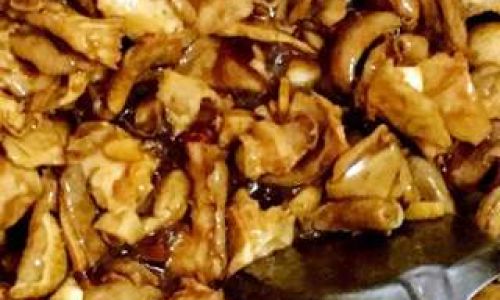
- Protein: Essential for muscle repair and immunity.
- Vitamin B12: Crucial for nerve function and red blood cell production.
- Zinc and Selenium: Minerals that support metabolic health and antioxidant defenses.
- Collagen: Promotes skin elasticity and joint health.
When paired with vegetables, 炒肚片 becomes a balanced meal, rich in fiber, vitamins, and minerals.
Conclusion: A Culinary Journey Worth Taking
Mastering 炒肚片 is a testament to patience, precision, and passion. While the process may seem daunting at first, each step—from cleaning the tripe to achieving wok hei (the breath of the wok)—is a lesson in culinary artistry. This dish invites you to slow down, savor the process, and appreciate the transformative power of fire and flavor. Whether you’re cooking for a crowd or indulging in a solo feast, 炒肚片 rewards effort with a symphony of textures and tastes that linger long after the last bite. So, fire up your wok, gather your ingredients, and embark on a journey to redefine your understanding of this humble yet extraordinary ingredient.
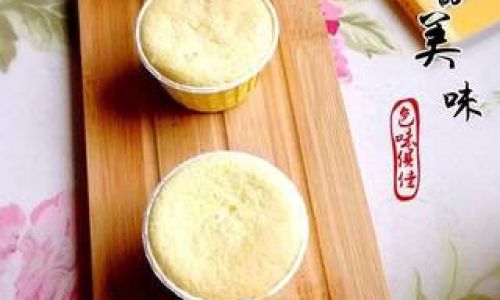
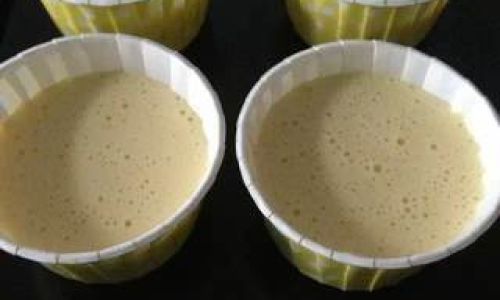

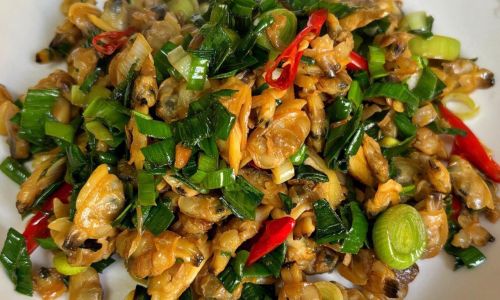
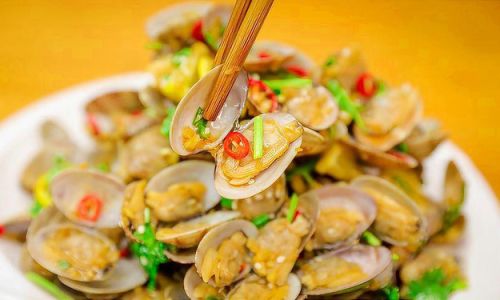
0 comments